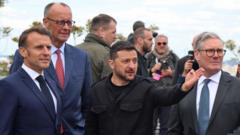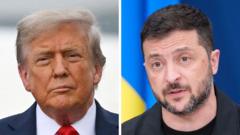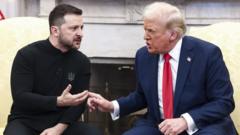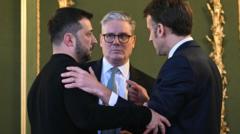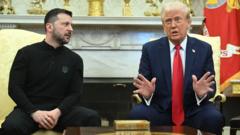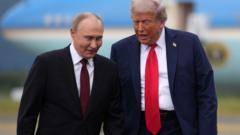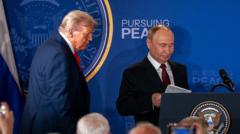In the wake of President Trump's return to the White House, the U.S. Agency for International Development faced unprecedented disruptions. With foreign aid programs halted and internal resistance mounting against the administration’s directives, the agency's survival was jeopardized within just two weeks.
U.S.A.I.D. on the Brink: The Fallout of a Sudden Political Shift

U.S.A.I.D. on the Brink: The Fallout of a Sudden Political Shift
Analyzing the turbulent transition at U.S.A.I.D. following Trump's inauguration as confusion and resistance rose among staff.
Inauguration Day marked a tumultuous beginning for U.S.A.I.D. as President Trump, keen on implementing his “America First” agenda, signed an order suspending all foreign aid. The implications of this order were nothing short of chaotic, leaving even newly appointed officials perplexed about their roles. Jason Gray, who had recently been thrust into the position of acting administrator, faced immediate turmoil when U.S.A.I.D. staff were ordered to cease project work globally.
As the staff received conflicting orders, an air of defiance grew within the agency. Employees started to resist under what they deemed illegal directives, causing friction with the Trump administration, which interpreted this defiance as insubordination—a catalyst for efforts to dismantle the agency entirely.
On the inauguration day, Gray issued a hopeful memo to the agency's employees suggesting a path towards innovation and collaboration within the next four years. However, within a mere fortnight, dramatically opposing conditions greeted the agency: international projects halted and staff primarily instructed to remain at home in Washington.
The situation revealed a disconnect between the administration's priorities and the intended operational goals of U.S.A.I.D. This confusing and sudden leadership shift was also intensified by the narratives of individuals like Pete Marocco from the State Department, whose roles were crucial in the unfolding saga of U.S.A.I.D.’s struggle to maintain its mission amidst political upheaval.
As confusion reigned both inside the agency and outside, experts began to question the future of international aid under a government bent on withdrawing from global commitments. The inherent tension suggested that the agency’s fate was more precarious than ever, and a consequential existential crisis loomed large.
As the staff received conflicting orders, an air of defiance grew within the agency. Employees started to resist under what they deemed illegal directives, causing friction with the Trump administration, which interpreted this defiance as insubordination—a catalyst for efforts to dismantle the agency entirely.
On the inauguration day, Gray issued a hopeful memo to the agency's employees suggesting a path towards innovation and collaboration within the next four years. However, within a mere fortnight, dramatically opposing conditions greeted the agency: international projects halted and staff primarily instructed to remain at home in Washington.
The situation revealed a disconnect between the administration's priorities and the intended operational goals of U.S.A.I.D. This confusing and sudden leadership shift was also intensified by the narratives of individuals like Pete Marocco from the State Department, whose roles were crucial in the unfolding saga of U.S.A.I.D.’s struggle to maintain its mission amidst political upheaval.
As confusion reigned both inside the agency and outside, experts began to question the future of international aid under a government bent on withdrawing from global commitments. The inherent tension suggested that the agency’s fate was more precarious than ever, and a consequential existential crisis loomed large.


